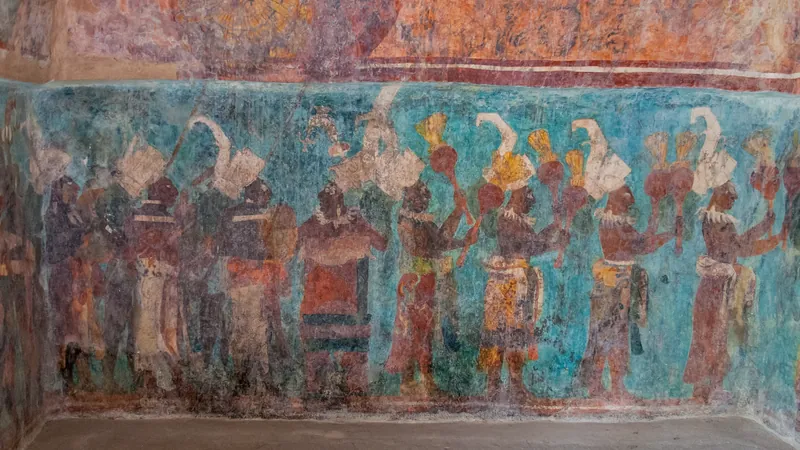
Unveiling the Secrets of Maya Blue: A Revolutionary Discovery from Chichén Itzá
2025-05-06
Author: Ling
A Colorful Mystery Unraveled
A thrilling investigation reminiscent of Sherlock Holmes has uncovered the ancient techniques behind the mesmerizing pigment known as Maya blue, revealing new insights that differ from previous research nearly two decades old.
The Fascinating Origins of Maya Blue
First identified in 1931, Maya blue is a striking pigment that mirrors the brilliance of an azure sky. This extraordinary hue has adorned everything from ceramics to ritualistic human sacrifices during the Late Preclassic period (300 B.C. to A.D. 300). Produced using a unique blend of organic indigo and an inorganic clay called palygorskite, Maya blue is renowned for its remarkable durability, remaining intact even in the harsh jungles of southern Mexico and Guatemala, where the ancient Maya civilization flourished.
The Journey to Discovery
For years, scientists sought to decode the precise crafting of Maya blue, achieving a breakthrough in 2008. By examining remnants of the pigment discovered in pottery at a well in Chichén Itzá, a team led by Dean Arnold from the Field Museum in Chicago identified copal, a sacred incense, as a key ingredient. The art of heating indigo, copal, and palygorskite over a flame was the original process that birthed this enchanting pigment.
A Second Method Revealed at the Society for American Archaeology
On April 25, at the Society for American Archaeology annual meeting in Denver, Arnold unveiled a groundbreaking second method for producing Maya blue. This revelation is highlighted in his upcoming book "Maya Blue" (University Press of Colorado, 2024).
Unlocking Clues from Ancient Bowls
Upon examining a dozen Maya bowls unearthed from the depths of Chichén Itzá, Arnold hypothesized that a white residue found in the vessels likely consisted of palygorskite ground wet, leaving minute traces in the bowls’ cracks. His meticulous microscopic analysis also uncovered tiny, charred plant stems, indicating that these bowls endured heating from below.
Maya Blue: More Than Just Aesthetic
According to Arnold, Maya blue transcends being a mere pigment; it embodies a significant piece of Maya cultural heritage. He states, "This is a genius discovery that they made, with knowledge likely restricted to specialized priests." He believes that this pigment played a vital role in sacrificial rituals to the rain god Chaak during droughts, suggesting that the combination of indigo, palygorskite, and copal may have symbolized an incarnation of the rain deity.
Ongoing Research: The Search for More Answers
Despite this monumental discovery, the complete mystery of Maya blue’s creation is not yet fully unraveled. Future studies are set to include a microscopic analysis of plant remains within the bowls to identify the specific genus and species responsible for this vibrant and ancient color.


 Brasil (PT)
Brasil (PT)
 Canada (EN)
Canada (EN)
 Chile (ES)
Chile (ES)
 Česko (CS)
Česko (CS)
 대한민국 (KO)
대한민국 (KO)
 España (ES)
España (ES)
 France (FR)
France (FR)
 Hong Kong (EN)
Hong Kong (EN)
 Italia (IT)
Italia (IT)
 日本 (JA)
日本 (JA)
 Magyarország (HU)
Magyarország (HU)
 Norge (NO)
Norge (NO)
 Polska (PL)
Polska (PL)
 Schweiz (DE)
Schweiz (DE)
 Singapore (EN)
Singapore (EN)
 Sverige (SV)
Sverige (SV)
 Suomi (FI)
Suomi (FI)
 Türkiye (TR)
Türkiye (TR)
 الإمارات العربية المتحدة (AR)
الإمارات العربية المتحدة (AR)